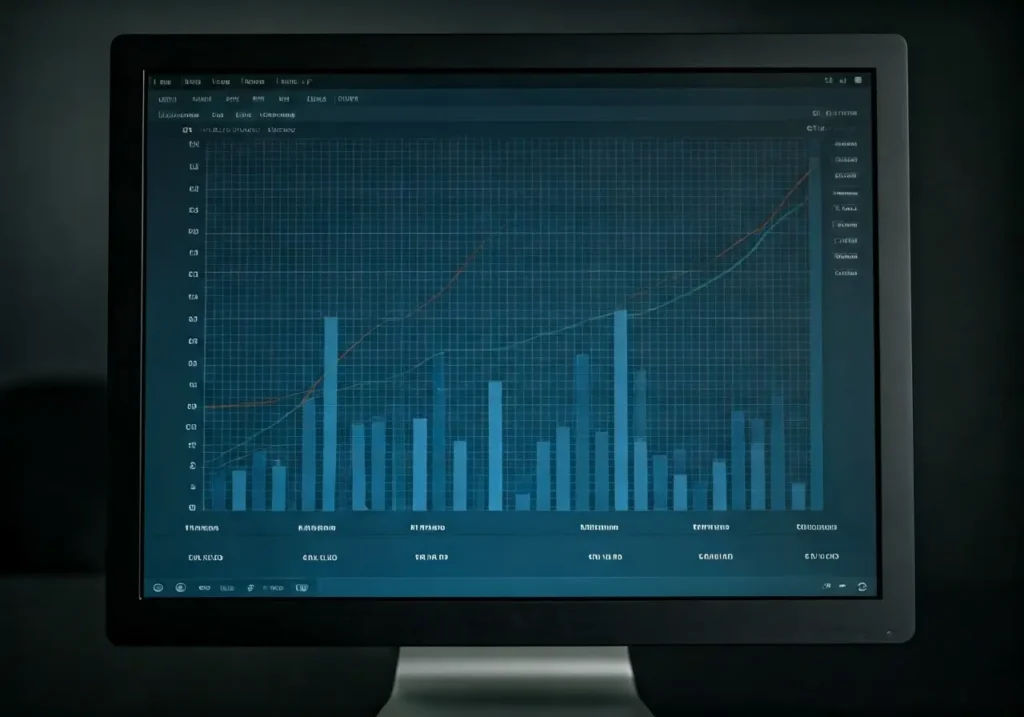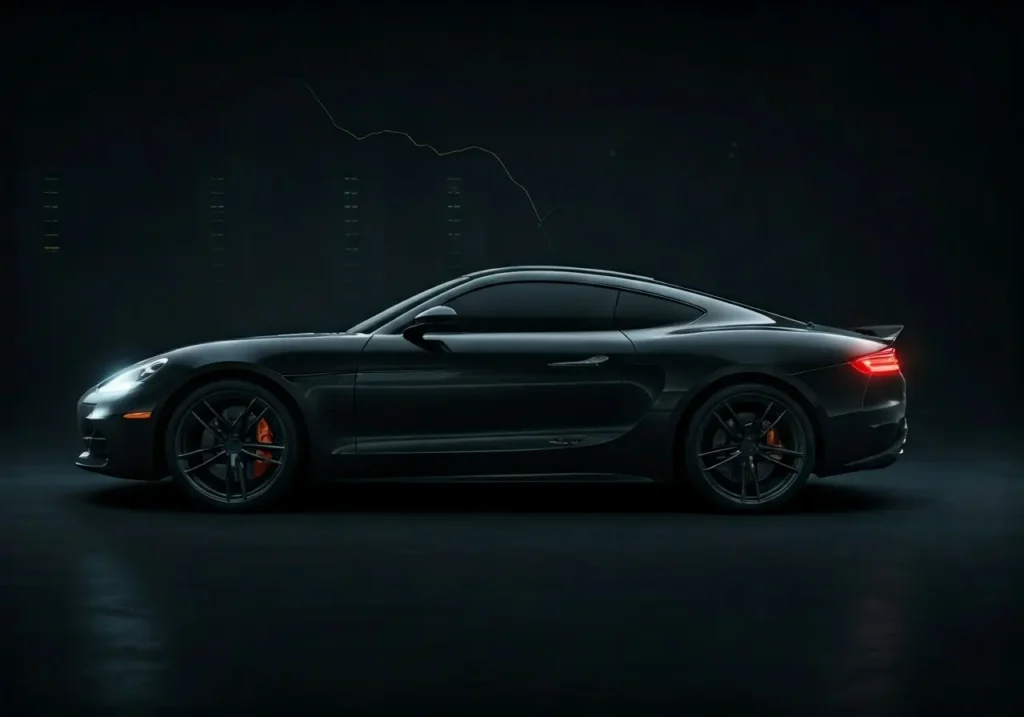Creating an automotive logo is more than just choosing a cool design. It’s about capturing the essence of your brand, appealing to your target audience, and standing the test of time. In this blog, we’ll explore the fundamental elements you need to consider to craft the perfect automotive logo.
1. Understanding Your Brand Identity
Before diving into design, it’s crucial to have a clear understanding of your brand’s identity. What are your brand’s values, mission, and unique selling points? Are you a high-end luxurious car brand, or are you a budget-friendly, family-oriented vehicle manufacturer? Knowing these key aspects will help shape the direction of your logo design and ensure it resonates with your target audience. For instance, luxury brands like Mercedes-Benz infuse their logos with elements that convey sophistication and prestige. These are the questions and thought processes that establish a solid foundation for your automotive logo.
A deep understanding of your brand identity also allows you to weave subtle yet powerful narratives into your logo. Think about how each component of your logo can symbolize what your brand stands for. For instance, if your brand focuses on innovation and cutting-edge technology, your logo could include modern, sleek lines and perhaps a nod to futuristic design. On the other hand, if stability and trust are your core values, you might incorporate solid, grounded elements. This phase of logo design is all about making sure every detail supports and enhances the story you want to tell about your brand.
Consider diving into our vast automotive archives to gather insights on industry trends, customer preferences, and other brands’ identities. This research phase is invaluable for understanding what resonates within the industry and can help you avoid common pitfalls. It’s all about making informed choices that reflect your brand’s authenticity and appeal to your target market.
2. Simplicity is Key
A simple logo is often more memorable and versatile. It should be easily recognizable at a glance and look great in various sizes and formats. Simplicity doesn’t mean boring; it means a clean design that effectively communicates your brand. Minimalist logos, like those of Toyota and Hyundai, use fewer elements and focus on clean lines and basic shapes according to Designhill.
The power of simplicity lies in its ability to deliver a clear message without overwhelming the audience. This is particularly important in the automotive industry, where logos need to be versatile enough to be placed on car badges, advertising materials, and digital platforms. For example, the timeless appeal of the Ford logo rests in its simple yet bold design. Focusing on minimalistic design increases the chances that your logo will age well and remain impactful over the years.
3. Color Psychology in Logo Design
Colors can evoke specific emotions and associations. Choosing the right colors for your logo can help communicate your brand’s message and appeal to your target audience. For example, red can radiate energy and passion, whereas blue often signifies trust and reliability. The iconic red of Ferrari’s logo instantly brings to mind speed and excitement, perfectly aligning with their brand identity. Colors play an essential role in creating a visual connection with your audience.
An understanding of color psychology is crucial to conveying the right message. Sleek silver, for instance, is often used to represent modernity and sophistication, making it a popular choice among luxury car brands. On the other hand, a vibrant green might signify eco-friendliness, an increasingly important value in today’s market. Choosing the right color palette not only enhances brand recognition but also strengthens the emotional and psychological connection your audience has with your brand.
For more detailed insights into how effective use of color can impact your design, consider exploring our resource on digital marketing strategies for small businesses where color psychology plays a significant role in branding and marketing efforts.
4. Typography Matters
The font you choose can say a lot about your brand. It’s essential to select typography that complements your logo and aligns with your brand’s personality. In the automotive industry, bold, all-caps fonts are a favorite. They convey strength, durability, and confidence. For example, the straightforward, powerful fonts used by brands like Ford and Jeep are memorable and instantly recognizable, projecting a sense of reliability and authority.
Typography is more than just picking a pretty font; it’s about ensuring readability and brand consistency. Sans-serif fonts are frequently chosen because of their clean and modern appearance, reflecting a brand’s forward-thinking nature. Alternatively, brands like Ferrari opt for serif fonts to give a touch of elegance and tradition. Ensure that your typography is versatile enough to be legible on various media, from small business cards to large outdoor billboards.
Detailed guidance on choosing the right typography can be found in our article on the importance of good graphics in web design. This resource can help you understand how different typographic styles can influence your brand’s perception and enhance your logo’s effectiveness.
5. Incorporating Automotive Imagery
Using automotive-related symbols or imagery can make your logo instantly recognizable within the industry. Think about elements like wheels, speedometers, or car silhouettes. For example, the Chevrolet logo incorporates a bowtie—an element that has become synonymous with the brand. Similarly, the BMW logo represents a spinning propeller, tying back to its origins in aviation. These elements create a visual identity that’s both unique and industry-relevant.
When incorporating automotive imagery, ensure it is not overly complex and remains easy to recognize. For instance, the simplicity of Tesla’s ’T’ logo is easy to remember yet packed with meaning—hinting at the cross-section of an electric motor. The goal is to find a balance where the imagery enhances the logo without seeming cluttered or overly intricate. This ensures that your logo remains versatile and adaptable across different mediums.
6. Versatility Across Mediums
Your logo should look good everywhere—from business cards to billboards. Make sure it works in black and white, as well as color, and is scalable to any size. This versatility ensures that your logo remains effective and impactful, no matter where it is displayed. Test your design by resizing it and placing it on different backgrounds to see how well it holds up. Leading brands like Nissan and Audi excel in creating logos that are versatile and adaptable.
Versatility also means your logo should perform well in both digital and print formats. Ensure that the design is clear and distinguishable in monochrome, which is vital for print materials such as letterheads, invoices, and promotional merchandise. By evaluating how your logo adapts across various mediums, you guarantee consistency and cohesion, which are essential for brand recognition and trust.
7. Timelessness Over Trends
While it’s tempting to hop on design trends, they can quickly become outdated. Aim for a timeless design that will remain relevant for years to come. Timeless logos like those of Volkswagen and Mercedes-Benz have stood the test of time with minimal changes. The key to timelessness is focusing on classic design principles: simplicity, balance, and proportion. Avoid overly trendy elements that might look dated a few years down the line.
A timeless logo doesn’t just rely on being simple; it often embodies universal and enduring qualities. For instance, Volvo’s logo incorporates Mars’ astrological symbol, representing iron—a nod to strength and durability that transcends fleeting design trends. By focusing on what makes your brand unique and essential, you create a logo that withstands the changing tides of design fashions. This dedication to timeless quality ensures your brand remains relevant and respected over the long haul.




